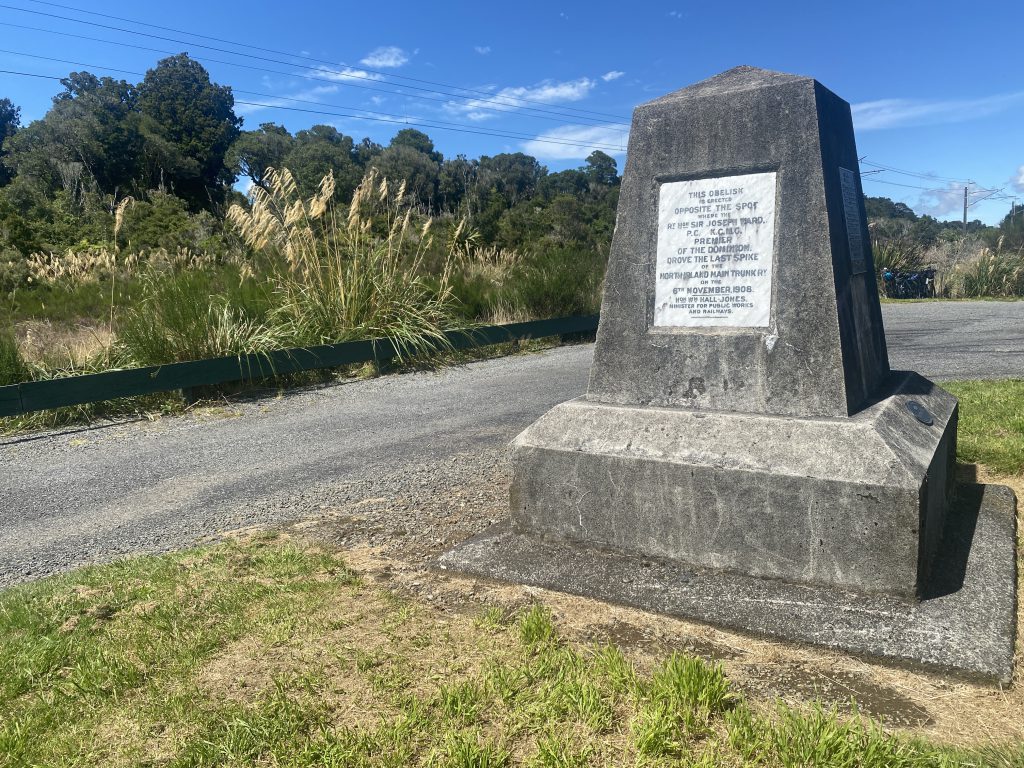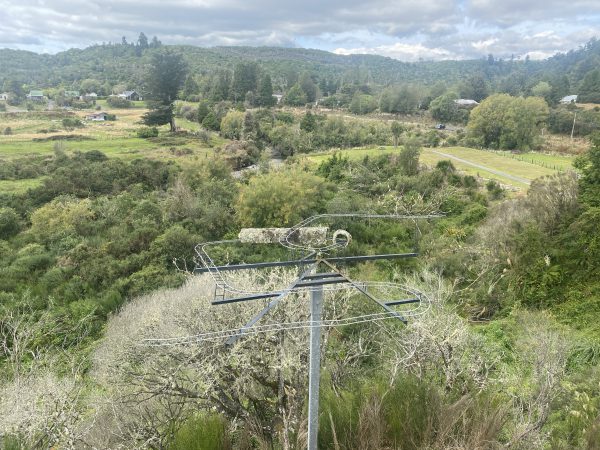In Hokitika, on the South Island's West Coast, one branch of the New Zealand national railroad ends at a major dairy. There was a daily train going there the three nights we stayed there, coming in while dark in the morning, leaving in the late afternoon.
At Arthur's Pass is a passenger station at the line's summit, where westbound trains go into the Otira Tunnel. The tunnel is 8.5km long with a 3% downgrade , so there are helpers added and removed here. One freight train is a unit train carrying coal from west coast mines to a power plant near Christchurch. Not sure what the other is carrying.
Standard gauge on all New Zealand railroads is 3'6", which over a foot narrower than the North American standard of 4'8.5". This allows for tighter curves and shorter crossties. Much of the North Island line is electrified. By accident we stopped at a rest area where there was a monument to the "golden spike" location.
Finally, the video ends with a quick view of the Raurimu Spiral on the North Island near National Park. It's where the main line crosses over itself above a tunnel, then continues on through reversing horseshoe curves. Not much is actually visible due to the geography and plant life, and the road to get to that location is a bit rough at the end. Never did see any rail traffic on the North Island lines, and the place we stayed at Raurimu, while near enough to the railroad at the bottom of the Spiral to hear it, didn't have a view.


